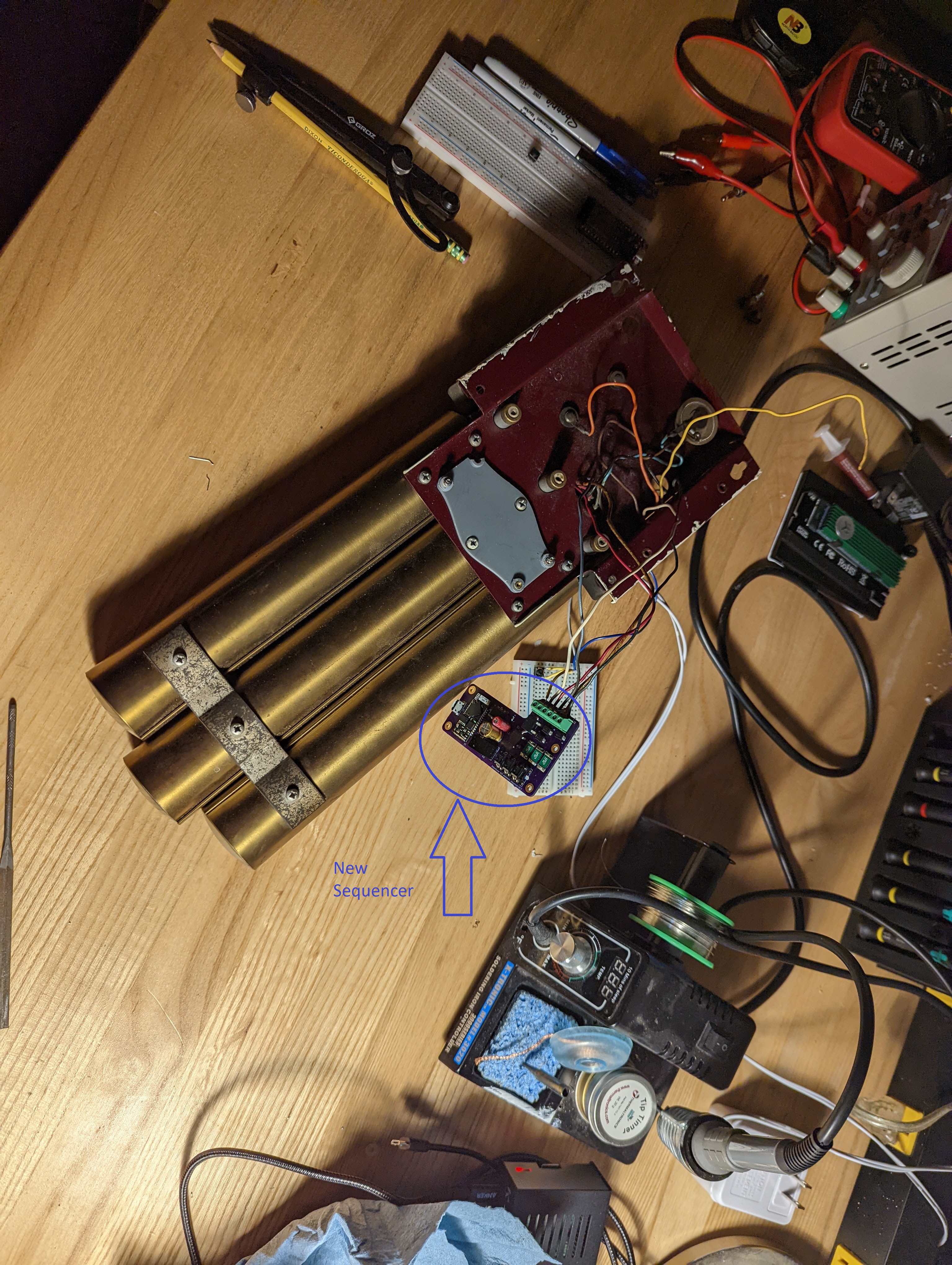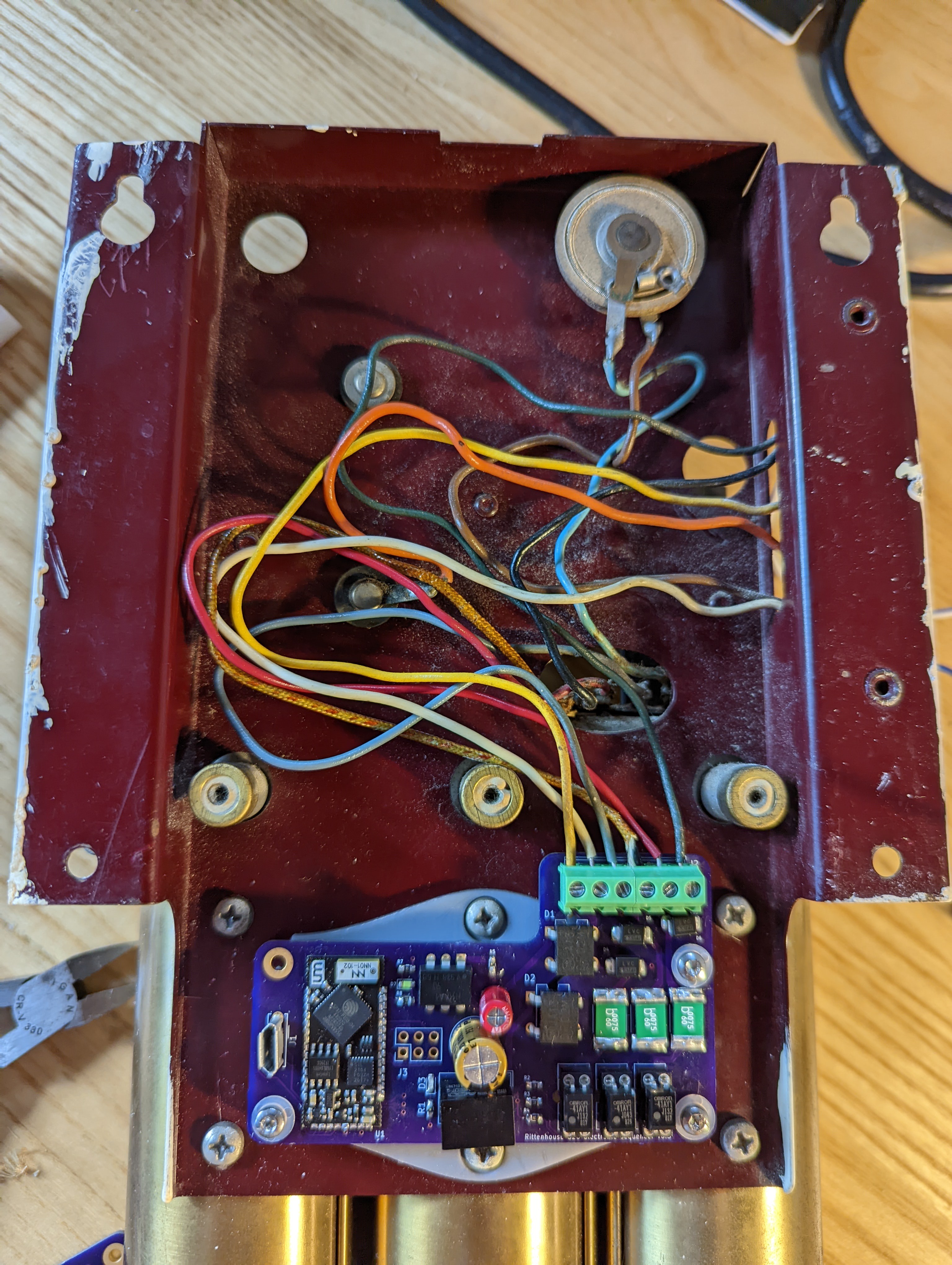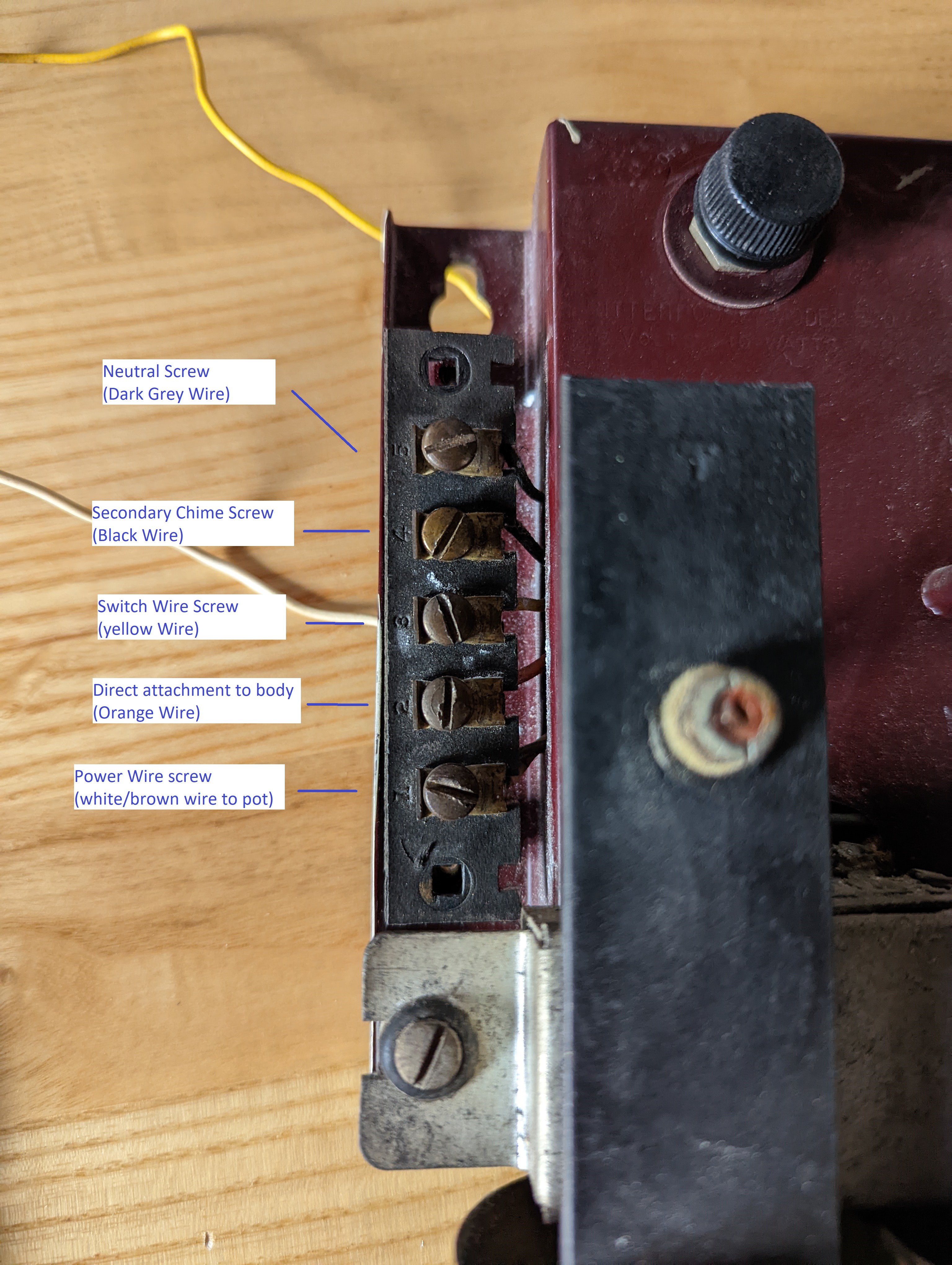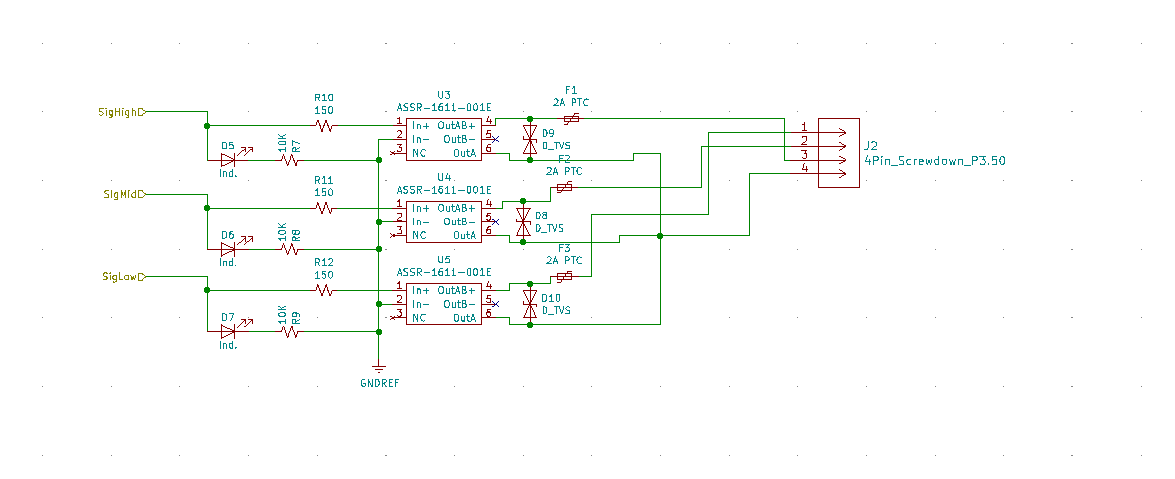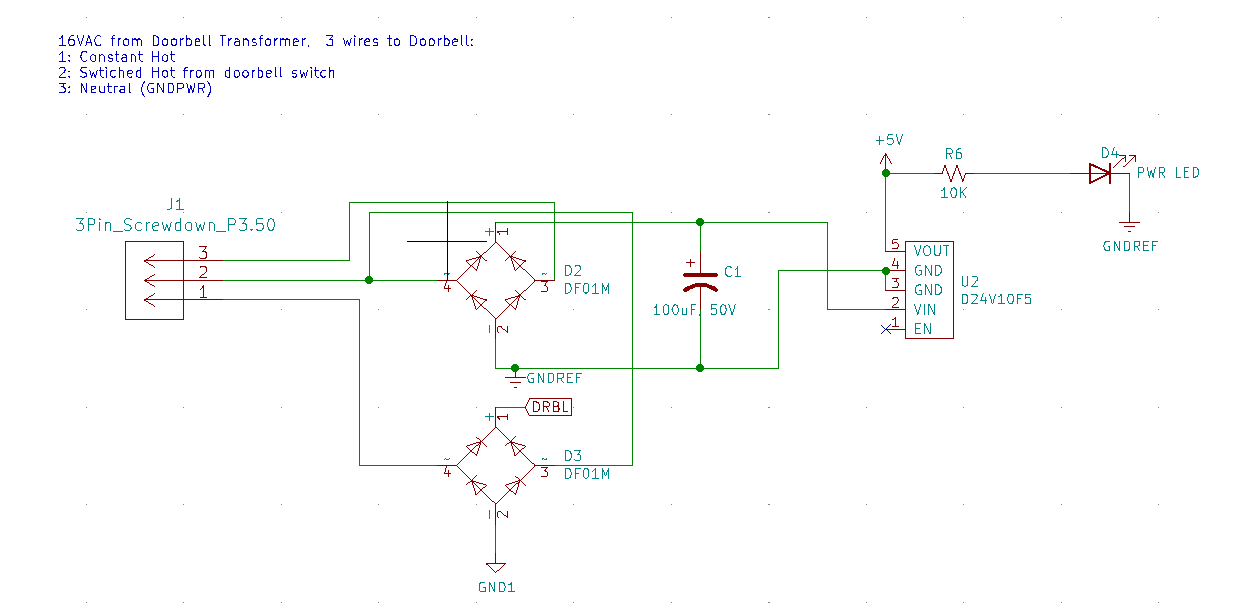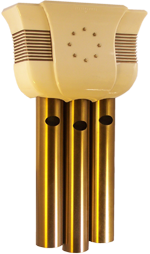-
Finally a working part!
02/14/2022 at 02:32 • 0 commentsAfter a couple revisions, learning what worked in terms of electronic components, and some seriously rookie mistakes, the v0.3 board that was sent out to OSHPark came back and after soldering on a bunch of parts, I tested it with the doorbell and IT WORKS! Thank gosh. Attached is a couple pictures of the test rig I used and the installed sequencer. Next step is to rewire the doorbell to the button on the front door and test it in place before cleaning everything up and installing it for real.
![Testing Sequencer Testing Sequencer]()
First test of the new circuit board ![Installed Sequencer Installed Sequencer]()
What the new sequencer looks like installed into the doorbell -
v0.3 Sequencer Sent to fabrication
01/28/2022 at 03:40 • 0 commentsI've gotten back to work on this project after a long absence. Finally got tired of people knocking on my door instead of using the doorbell. Worked through some kinks in the original design, updated and streamlined some of my circuit designs, and removed some superfluous components. Finally sent out for a prototype board to OSHPark today to see if this design will work better than my previous attempt. I've uploaded my KiCAD files if anyone else want to take a look or critique.
-
Tracing Doorbell Wiring
10/30/2021 at 05:05 • 0 commentsI've not been working on this project for awhile (the kitchen took precedence). I've traced the doorbell wiring to make sure that I hook it up to my circuit board correctly:
white - power wire (screw 1 on the front)
red - high chime
brown/red stripe - low chime
yellow - screw 3 on from (switch wire)
grey - med chime orange - ground?
sky blue - to chimes
brown - power wire (shared with white)
black - secondary chime wire.
Dark grey - neutral wire screw 5 on front
![Screw Terminal Labels Screw Terminal Labels]()
Screw Terminal Labels -
Learning Circuit Design...by Failure
04/08/2021 at 15:51 • 0 commentsAfter creating the design for the power supply, the next piece that I needed to create was the interface to ring the chimes. Because I started without any idea about the intricacies of circuit design, I started testing with a out of the box relay module from Sainsmart:
https://www.sainsmart.com/products/4-8-channel-5v-2a-solid-state-relay-high-level-trigger
Hooking this up to a test circuit just to try and ring the bell through a button and connecting the relay to the solenoids...fried the board. Not understanding inductive loads, I had not given any thought to inductive flyback, and even after frying the Sainsmart board, I went to to fry some more solid state relays before understanding the circuit design necessary to protect against this type of problem. After coming to this realization, I added a TVS diode across the relay, and this has fixed the problem for now, but as always I am happy to be criticized to update the circuit and add more protection. The design of this part of the circuit is below:
-
Researching New Sequencer Power circuit
01/21/2021 at 17:42 • 0 commentsAssuming that someone has tried to do something like this before, Google once again comes to the rescue to find a possible solution for my issue. after some researching I found this very helpful site that gave me a solid background upon which to create my new sequencer:
https://lowpowerlab.com/2015/04/13/doorbell-moteino/
Really easy to follow documentation on how to create a rectifier circuit, as well as a doorbell press detection circuit! really helpful and simple. So working through what I found I decided that I could probably leverage a lot of what was found in this tutorial, with a few modifications. Because the chime I have requires a constant 16VAC power supply, I already had a power source I could tap into to power the sequencer. I decided to beef up the rectifier to a full-bridge style chip, I settled on the DF01M for its small packaging and more than adequate output, paired with a 100uF, 50V capacitor to smooth the voltage output.
This was my first foray into some more semi-serious circuit design, as before this it was incredibly simple stuff. Once I had all that wired up I added a D24V25F5 buck converter from Pololu to drop the voltage to something the ESP32 could handle, and tested the circuit to make sure the output was at the level I expected. Amazingly it worked! A few tweaks to the circuit to add an power LED indicator and we had created a stable power source. -
Background Research
01/19/2021 at 19:10 • 0 commentsAs with every project in the Google age, I started by, well... Googling it. Apart from the overall design, there exists no identifying marks on the chime, except for some indication of the required voltage etc underneath the volume knob. So after some creative googling (doorchime 3-note, chime old, chime 1950s , etc.) I was able to find the following reference:
![]()
https://www.electrachime.net/resonator-door-chimes/rittenhouse-beverly-1949/Beverly Model – The highly popular model is ideally suited for those people who prefer a chime which takes up less space than the long-tube model. It has a beautifully rich resonant tone, a melody of either 3 or 4 notes. A simple link attachment makes it possible to install the chime to play either a 4-note melody or a shorter 3-note sequence if the owner prefers. The Rittenhouse volume control permits adjusting the tone to any desired level. A shut-off switch also makes it possible to completely turn off the unit if for any reason you do not wish to be disturbed. The rich, ivory plastic housing and the graceful brushed brass tubes combine to provide a beautiful design that is in good taste in any home.
With the model number in hand, I was able to narrow my Googling, and ran across the delightfully helpful site Knock Doorbells. Here is where I was able to learn pretty much everything I needed to know not only about how the chime worked, but also about the inherent dangers of this type of chime. Originally I was just looking to replace parts until it was in working order, but with the knowledge gained from Knock Doorbells, I decided it was worth trying to upgrade it in order to minimize my fire risk and give it some new life.
